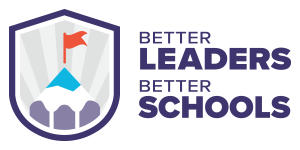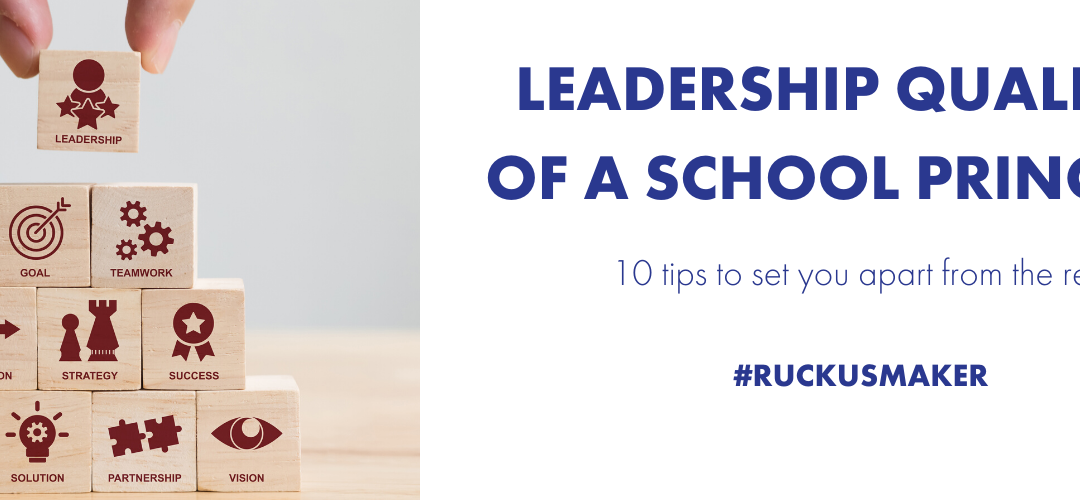What does it take to be a school leader? Better yet, what are the qualities that make a great principal?
First things first, every role has a set of basic skills you need in order to minimally qualify for the job. These skills are what I call permission to play skills: hard work, communication, organization, ability to have tough conversations, etc.
Having these skills does not mean you will be a top-performer, it just means you qualify for the job.
At Better Leaders Better Schools, our why is
[bctt tweet=”Everyone wins when a leader gets better. Everyone wins when you get better.”]
That said, let’s look at some skills that will help you become a linchpin in your organization.
DOWNLOAD THE WHAT MAKES A GREAT PRINCIPAL PDF
Oops! We could not locate your form.
10 Uncommon skills the best school leaders have
Mental models. Abraham Maslow once said, “If all you have is a hammer, everything looks like a nail.” The main reason schools don’t leap in quality is the fact they continue to do what they’ve been doing for years. Einstein called this behavior insanity. Average leaders today were taught by the average leaders of yesterday. To be a highly effective leader, you need more tools. Every problem is not a nail.
Mental models are frameworks to process challenges. Some mental models you should start investigating:
Two great books that are my go-to for mental models: The Great Mental Models Volume 1 and The Great Mental Models Volume 2.
Loose-tight boundaries. Rick DuFour popularized this idea in his groundbreaking work with PLCs. The gist was that some things must get done and need tight boundaries. Other things are important, but the staff can have autonomy in how they want to execute the idea. This latter group would have loose boundaries since the staff had ownership of how to proceed.
Flexible. Loose boundaries are just one example of the importance of flexibility in leadership. We know this to be true. A brittle and inflexible approach will lead to brokenness — whether that is broken expectations, broken outcomes, or broken relationships. Bamboo is a popular building material because it is highly flexible, strong, and sustainable. These are all qualities a high-performing leader exhibits as well.
There is usually more than one way to get stuff done. When we are flexible in our approach and open-minded about how our staff can work, a better culture is formed. In the mastermind, one of our core values is called Rule #6. When we take the work seriously (but not ourselves) we are able to be humble and flexible in our approach.
Emotionally intelligent. According to Bradberry and Greaves, only 36% of people are able to accurately identify their emotions. That means nearly ⅔ of leaders reading this post are unaware of what they are feeling right now. This is problematic because a lack of awareness leads to poor choices and mistakes that could have been avoided. Bradberry and Greaves also found that 90% of top-performing leaders were also strong in emotional intelligence (EQ). During a pandemic, EQ is even more important.
Build a diverse team. A challenge every organization faces is hiring. Many leaders mistake a cultural fit or alignment with core values as just hiring in a homogeneous manner. As a principal, I saw this time and again when a committee wanted to hire people that were just like them. They missed on opportunities because of these prejudices.
Hire for diversity in terms of gender, sexual orientation, race, etc. Also hire in terms of divergent thinking. If you are a big picture thinker add someone who loves details. If you naturally avoid conflict, bring someone to the team that thrives in challenging situations.
[bctt tweet=”Diversity will lead to more sparks and you’ll absolutely build a better organization.”]
DOWNLOAD THE WHAT MAKES A GREAT PRINCIPAL PDF
Oops! We could not locate your form.
Analysis. School leaders are adept at analyzing numbers when it comes to student data. Analysis shouldn’t stop there.
Wes Kao wrote a great article on how to be more analytical. She asks some good questions that help you understand patterns:
- “What’s ‘normal’ around here?
- What sticks out?
- Why is it sticking out?
- How much does it stick out compared to everything else?”
What she says about expected versus actual growth could help leaders be more realistic and supportive taking their school to the next level. Wes also asks leaders to consider who benefits from the narrative. When analyzing systematic racism in school this is a phenomenal view to consider.
In the end, her approach is about curiosity and to always question why things are happening.
Innovative. Besides doing the same thing expecting different results, schools need to create systems that support innovation, risk-taking, and safe-failure. Jeff Ikler and Kirsten Richert taught me that it’s important to not only say “we want to innovate” but also to support that value through resources and systems/structures. You can hear how they approach innovation within organizations on this podcast episode.
Story-telling. If you rely on 1000 slides in a presentation packed with data and bullet points, you’ve already lost. Data and logic help form strong arguments, but we are emotional beings. If you want me to act, connect with my heart. Expand your influence by telling better stories. It’s neuroscience.
“The real difference between us and chimpanzees is the mysterious glue that enables millions of humans to cooperate effectively. This mysterious glue is made of stories, not genes.”
Yuval Noah Harari
I took this Akimbo workshop on story skills and it was well worth it.
I’m also reading Jiwa’s Difference and Story-Driven with a group of edupreneurs right now.
Maintain boredom. This is likely the most counterintuitive skill of successful leaders. Whether it is the consistency needed to land essential messages or the ability to say “No” to shiny objects, I believe great leaders are bored leaders.
Former LinkedIn CEO Jeff Weiner said, “Just when you are getting bored of saying something, that’s the moment your people are beginning to hear it.”
Leaders are inundated with information and opportunities. Many are easy to discard. That takes no skill. The real challenge is to eliminate good opportunities so you only say “Yes” to great opportunities.
Sticking to the plan with incredible focus is boring. It also is the surest path to success.
Self-care routine. This can be very difficult. Leaders need proper sleep, about seven to eight hours each night. We need to eat healthy foods and maintaining a fitness routine. These are the first things we cut when the tyranny of the urgent takes over our schedule. Falling for this trap is a sure-fire way to a frustrating existence. And those are just the basics! I love to read, go for walks where my mind wanders, cook good meals for my family, and draw or paint.
Boundaries are helpful here. Put these activities on the calendar first and tell some friends to check-in on you. Give them permission to hold you accountable and engage you in difficult conversations. I love it when my coach asks me about my self-care routine. It cuts straight to the core. I cannot hide. If you want to run a great organization, live a great life first with a focus on self-care.
DOWNLOAD THE WHAT MAKES A GREAT PRINCIPAL PDF
Oops! We could not locate your form.
The next step
Sure, you can go out and learn all these skills on your own, but that will take a heavy investment in time and lacks a crucial component of leadership development: feedback loops.
A great way to accelerate your leadership development is to surround yourself with other leaders on the same journey. If you are currently leading in isolation or lack mentorship in your district, our leadership community (The Mastermind) is perfect for you.
Join 50+ school leaders from around the world on a quest to level up their skill set. You can learn more about the mastermind here.



